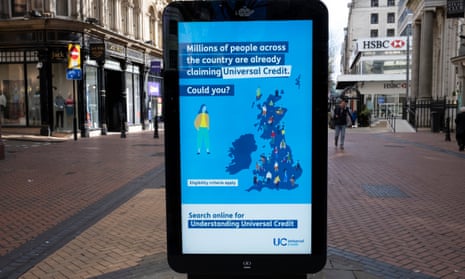The number of people claiming unemployment benefits increased by the most since records began in April to reach almost 2.1 million, according to official figures capturing the onset of the coronavirus crisis.
In a reflection of mounting job losses across the country, the Office for National Statistics said about 856,500 people signed up for universal credit and jobseeker’s allowance benefits in April, driving up the overall UK claimant count by 69% in a single month.
The surge marked the biggest monthly increase since comparable records began in the early 1970s, while the overall number of people claiming for benefits due to unemployment has risen above 2 million for the first time since 1996.
Economists said the dramatic increase in unemployment would have been much higher without the government’s emergency wage subsidy scheme. About 8m jobs have been protected at about 1m companies in the opening weeks of the programme, in which the government pays 80% of workers wages up to £2,500 per month. The ONS does not count furloughed workers as unemployed.
Unemployment is expected to steadily climb in the coming months as Britain grapples with the deepest recession in more than three centuries, while the Treasury has also been warned the gradual winding down of its emergency support from August could trigger a fresh wave of job losses.
Tej Parikh, the chief economist at the Institute of Directors, said: “While furloughing is holding off some job losses for now, it’s not yet clear how firms will react as the scheme changes in August and as social distancing continues.”
“Many companies will still be in the middle of a cashflow crisis, and will struggle with any cost increases. Government faces an onerous task in winding down the scheme without causing too much pain.”
The ONS cautioned that the increased number of people claiming benefits may not be as a direct consequence of unemployment, as the government had expanded eligibility for universal credit in response to Covid-19.
However, the first official attempts to gauge the economic fallout showed the number of employees on company payrolls plunged by 450,000 at the start of April as staff were let go and hiring ceased. The number of vacancies posted by companies looking for new staff also halved.
The Institute for Employment Studies warned unemployment was rising fastest in parts of Britain that were already worst off. It said one in nine residents in Blackpool (11%) are claiming unemployment benefits, up from 7% in March. The number of claims increased most in the north of England and Northern Ireland, and rose the least in the South-east and the east of England.
Tony Wilson, director of the thinktank, said the snapshot probably understated the severity of the crisis as it counted claims up until 9 April. “In reality, unemployment today is likely to already be close to 3 million,” he added.
Government statisticians said the official jobs market figures were yet to catch up with the economy effectively grinding to a halt, after the launch of the nationwide lockdown on 23 March.
Providing a snapshot of the jobs market before Covid-19 struck, the ONS headline unemployment metric fell slightly to 3.9% in the three months to March, marking the lowest level of unemployment since the mid 1970s. The percentage of people in work also reached a joint-record high.
However, early estimates suggested the number of hours worked in Britain fell sharply in the last two weeks of March after restrictions came in, with the amount of time spent working plunging to about 25% below normal levels.
Jonathan Athow, the deputy national statistician at the ONS, said: “This is a huge fall, and evidence of employers either putting staff on furlough and/or cutting the hours of those still working.”
He said the sectors with the biggest fall in hours worked were hotels, restaurants and construction, which had recorded the biggest declines in economic activity. Healthcare hours were broadly unchanged.
In a signal of the looming damage for workers’ pay packets, government statisticians said annual wage growth slowed to 1.5% in March, the lowest rate in almost six years. Economists warned there would probably be an outright decline in average earnings within months.
Following one of the weakest recoveries in history from the 2008 financial crisis, average wage packets after inflation only returned to 2007 levels at the end of 2019, marking 12 years without progress for workers.
Employment minister Mims Davies said the latest figures showed the government had built strong foundations in the jobs market before Covid-19 struck, which would help the country to bounce back as lockdown restrictions are lifted.
“Clearly these figures are behind on our current struggle but the impact of this global health emergency is now starting to show – and we’re doing everything we can to protect jobs and livelihoods,” she said.
